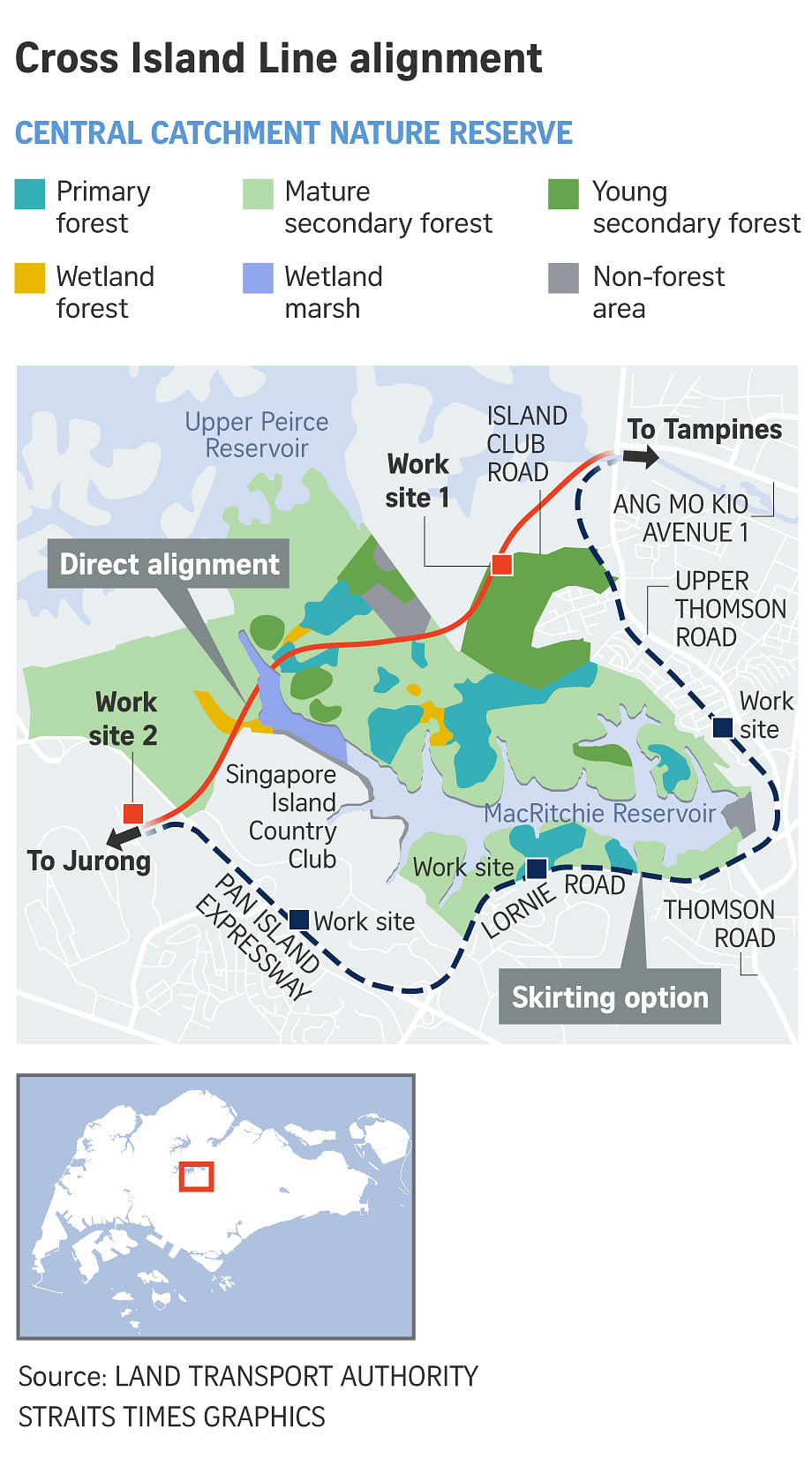SINGAPORE - The upcoming Cross Island MRT Line that will stretch from Changi to Jurong Industrial Estate will run under the Central Catchment Nature Reserve (CCNR).
The Land Transport Authority (LTA) had previously considered two options - the direct alignment option to build the line under the nature reserve, or the skirting option, to build the line around the nature reserve.
Here are four reasons behind the decision:
1. Reduces commuting time by six minutes
The line under the CCNR will reduce travel time for commuters by six minutes, as compared with the skirting option.
2. Reduces public transport fares by 15 per cent on the direct route
LTA said the decision to build directly under the reserve could lower public transport fares by 15 per cent on average.
The shorter and more direct route would cost commuters less, made possible under the current distance-based fares.
3. Lowers construction cost by about $2 billion
Building under the reserve could cost taxpayers $2 billion less compared with the alternative skirting option.
Previously, an independent panel of advisers engaged by LTA had said the skirting alignment would result in more engineering challenges compared with the direct alignment.
Residents living in the area around the CCNR had also voiced concerns in the past that skirting the nature reserve would affect them.
4. Lower energy consumption
In the longer term, LTA said the direct alignment decision could prove to be more environmentally friendly as it had lower energy consumption as compared with the skirting option.
LTA said the Government has considered the concerns expressed by all stakeholders and the findings of the comprehensive two-phased Environmental Impact Assessment (EIA).
"LTA has been and is fully committed to implementing all practicable environmental mitigation measures recommended by the EIA. We will continue to engage and address feedback from stakeholders during the design and construction phase," it said.


Sources: LTA, The Straits Times


